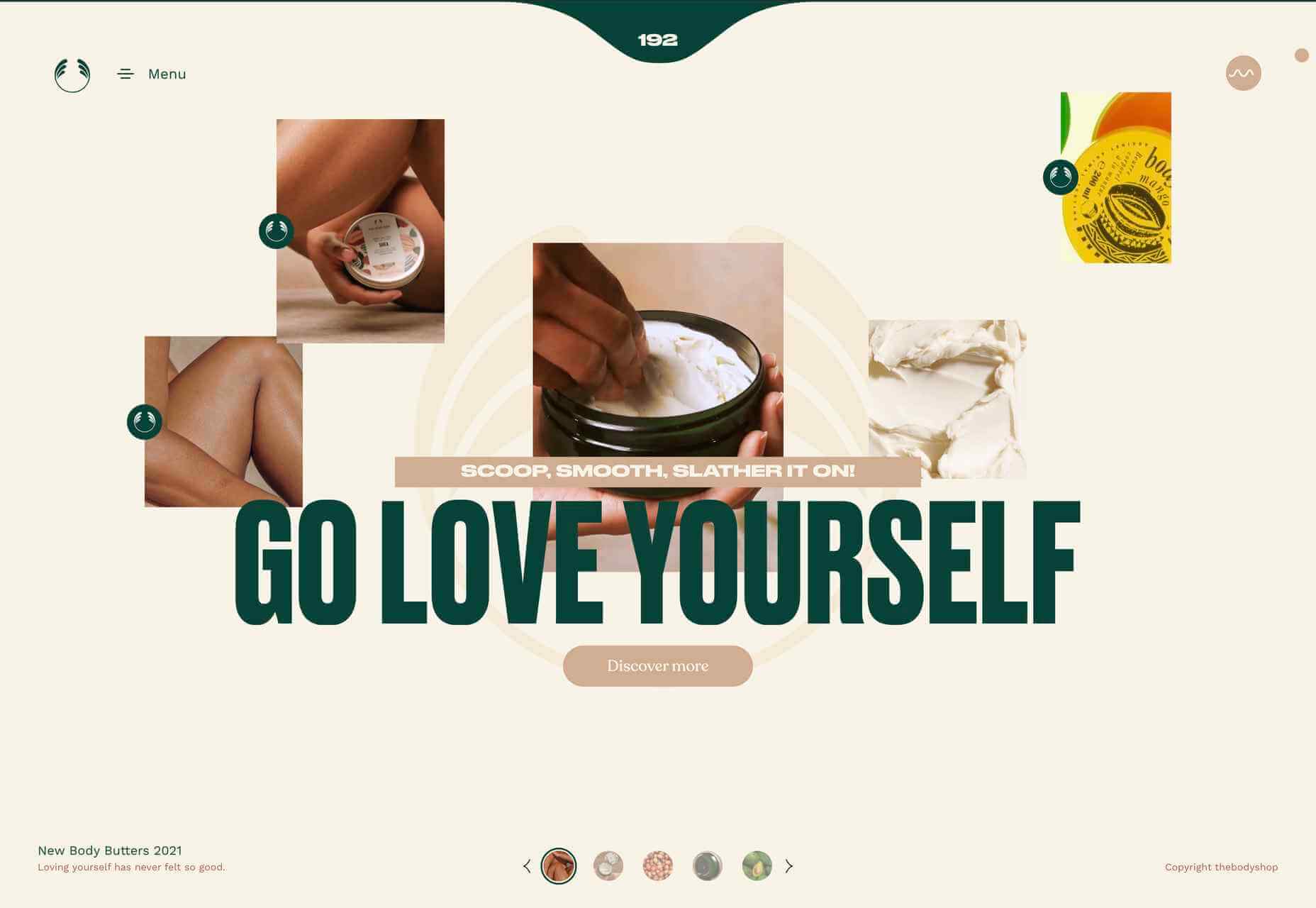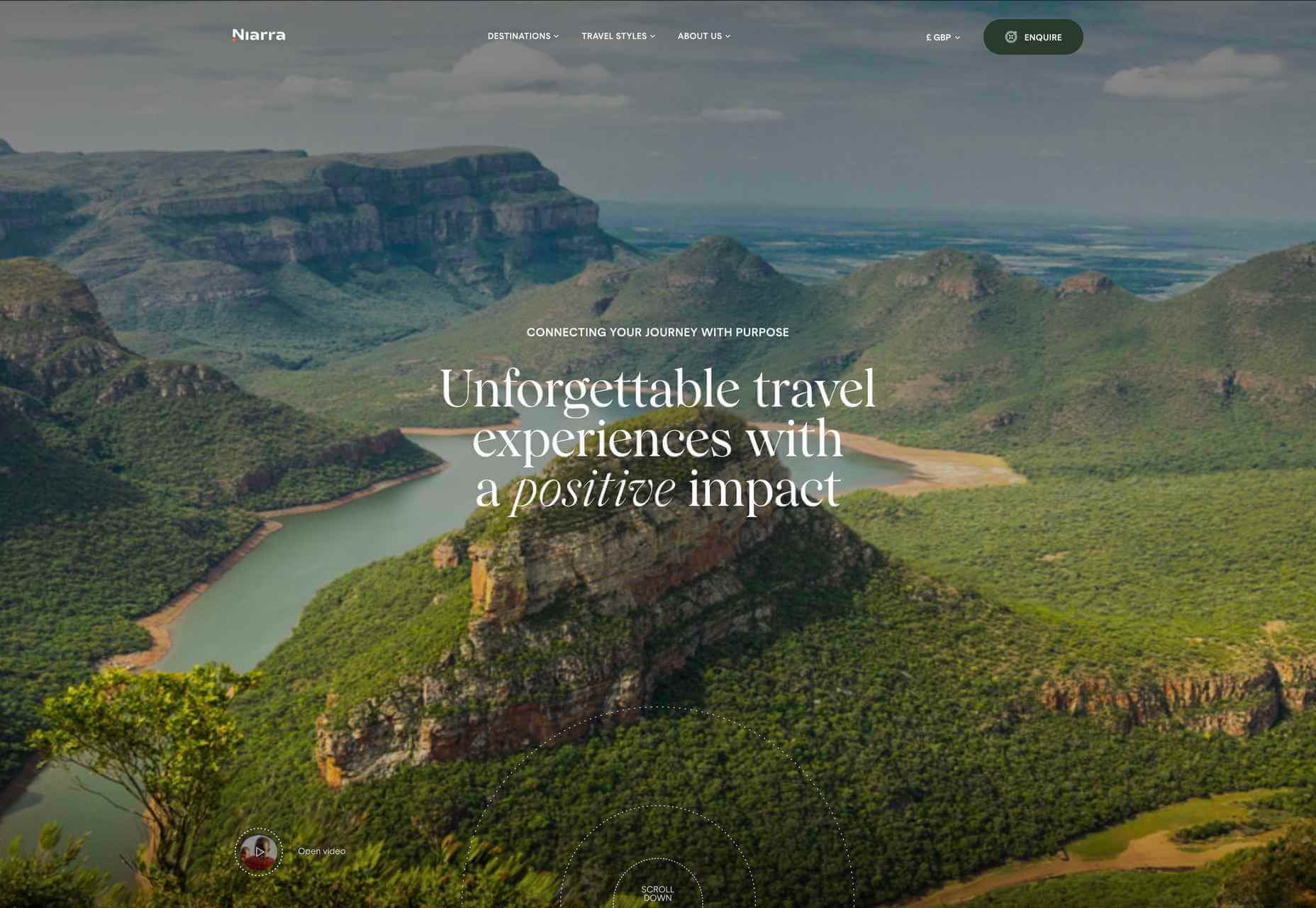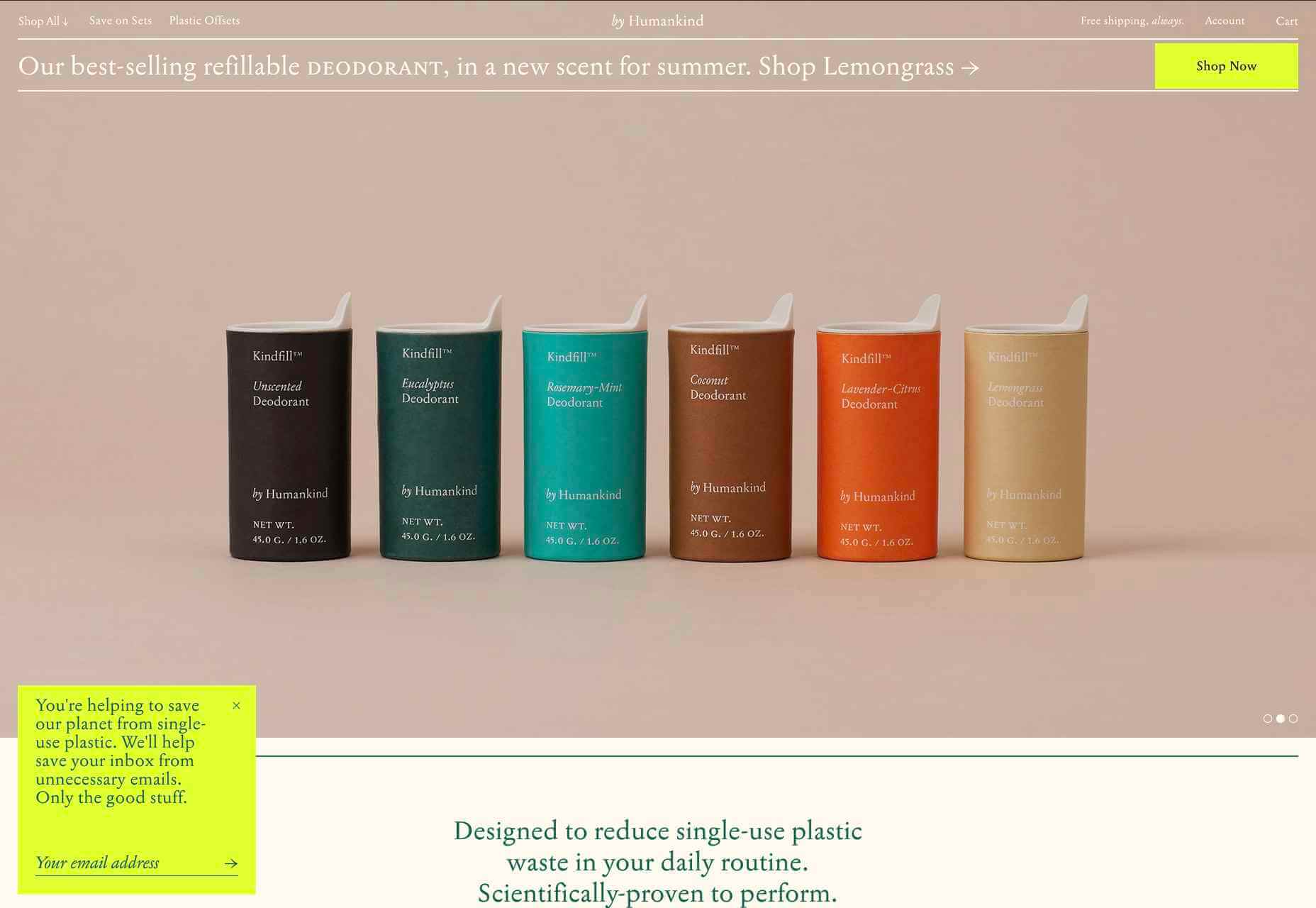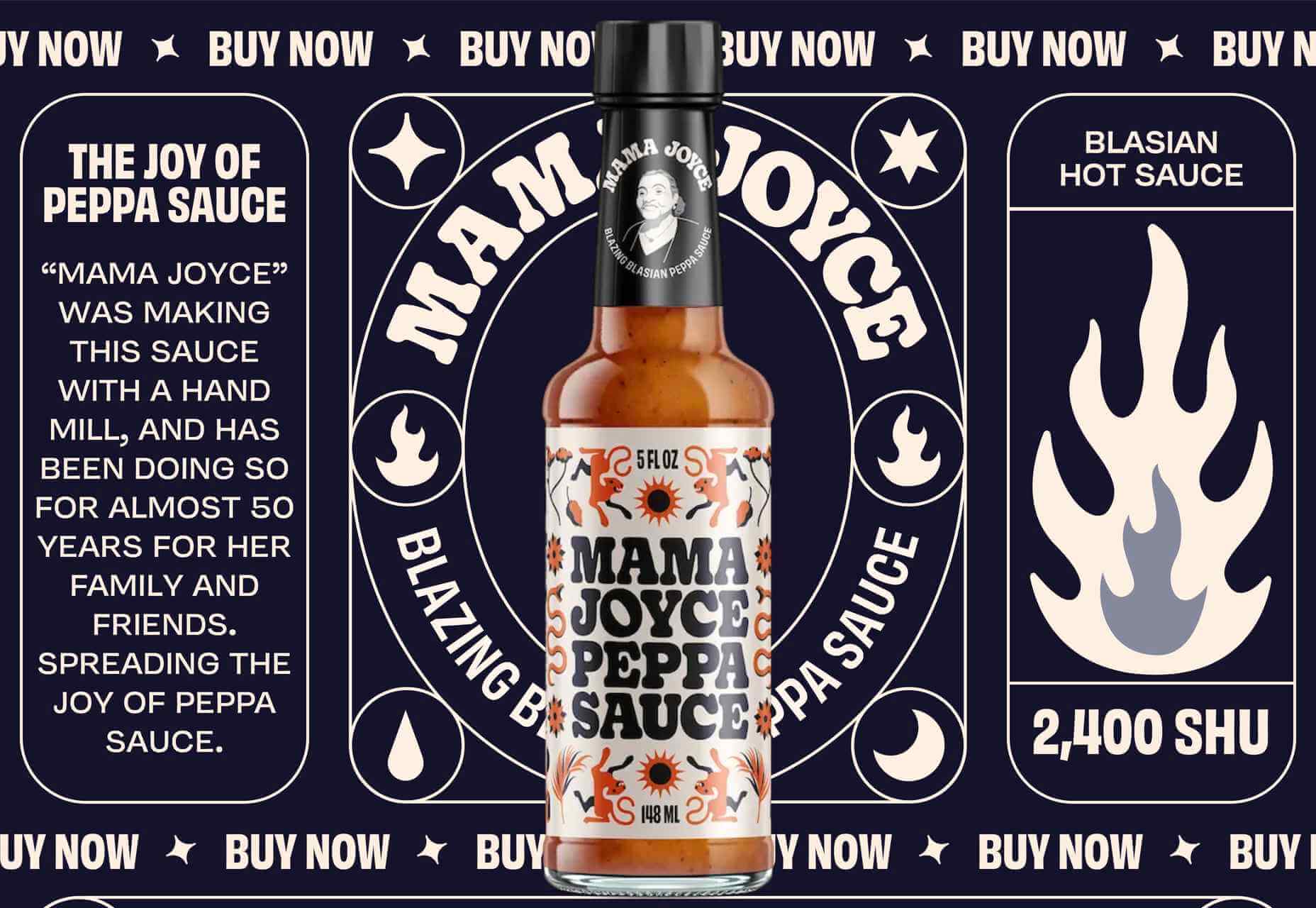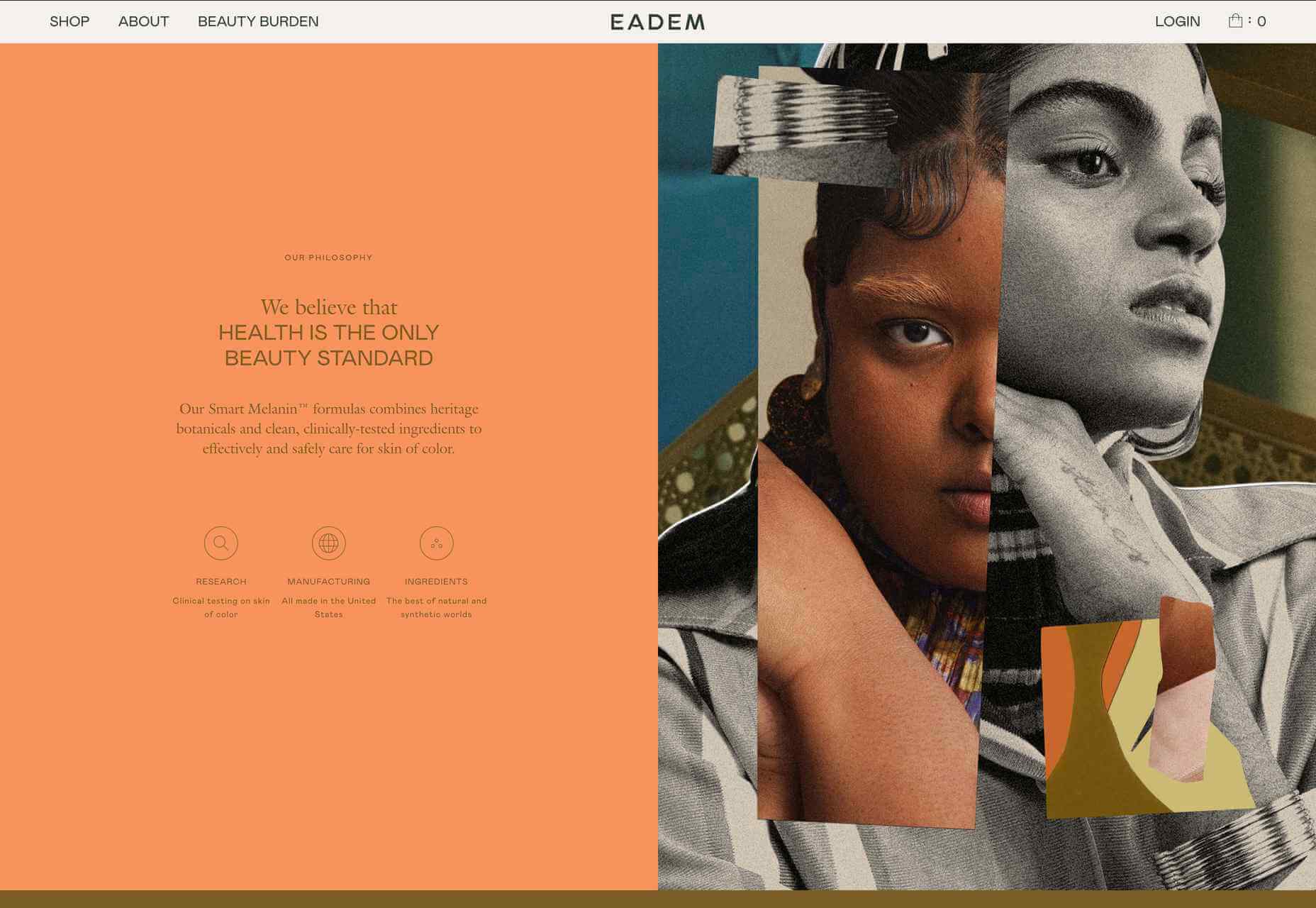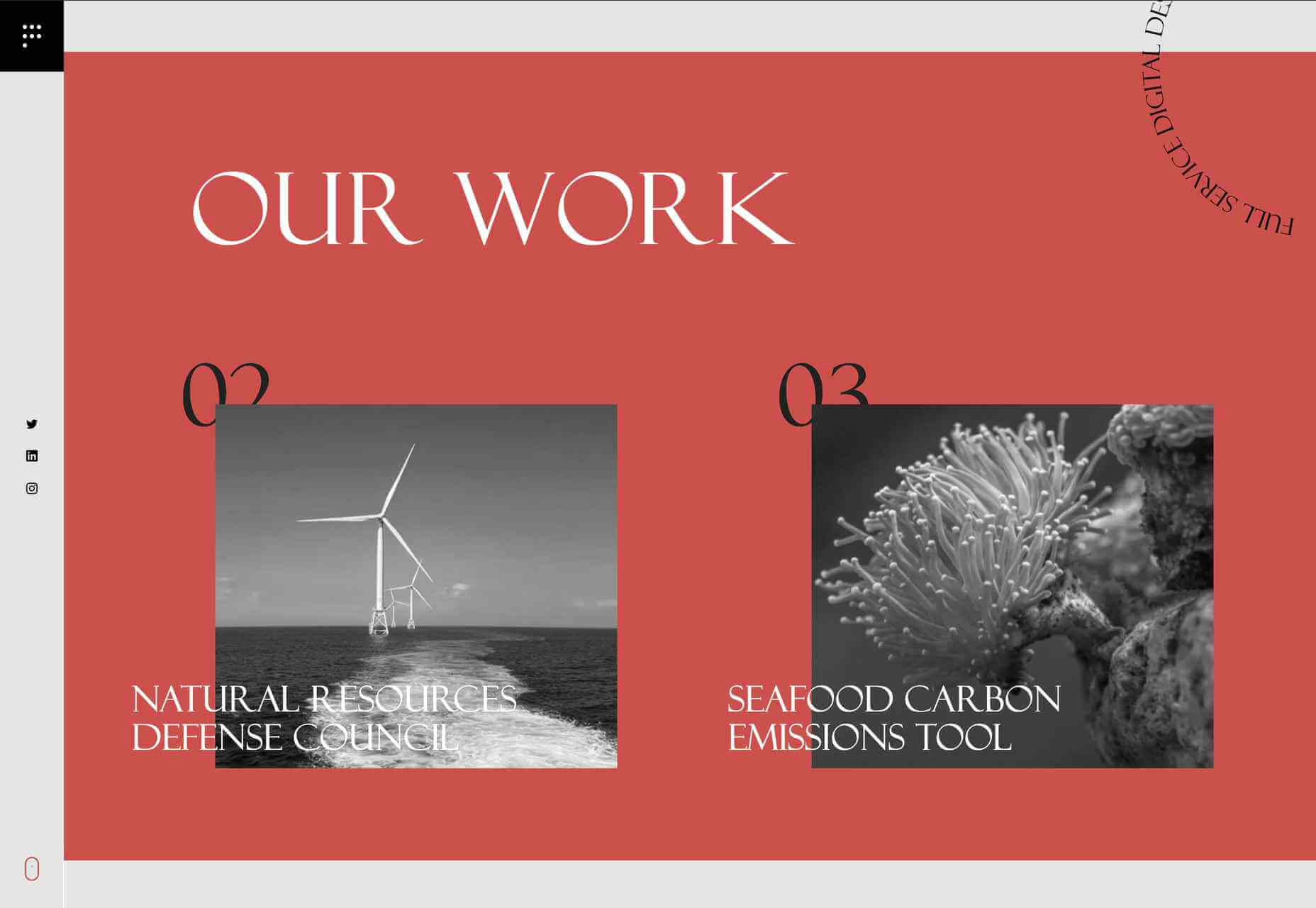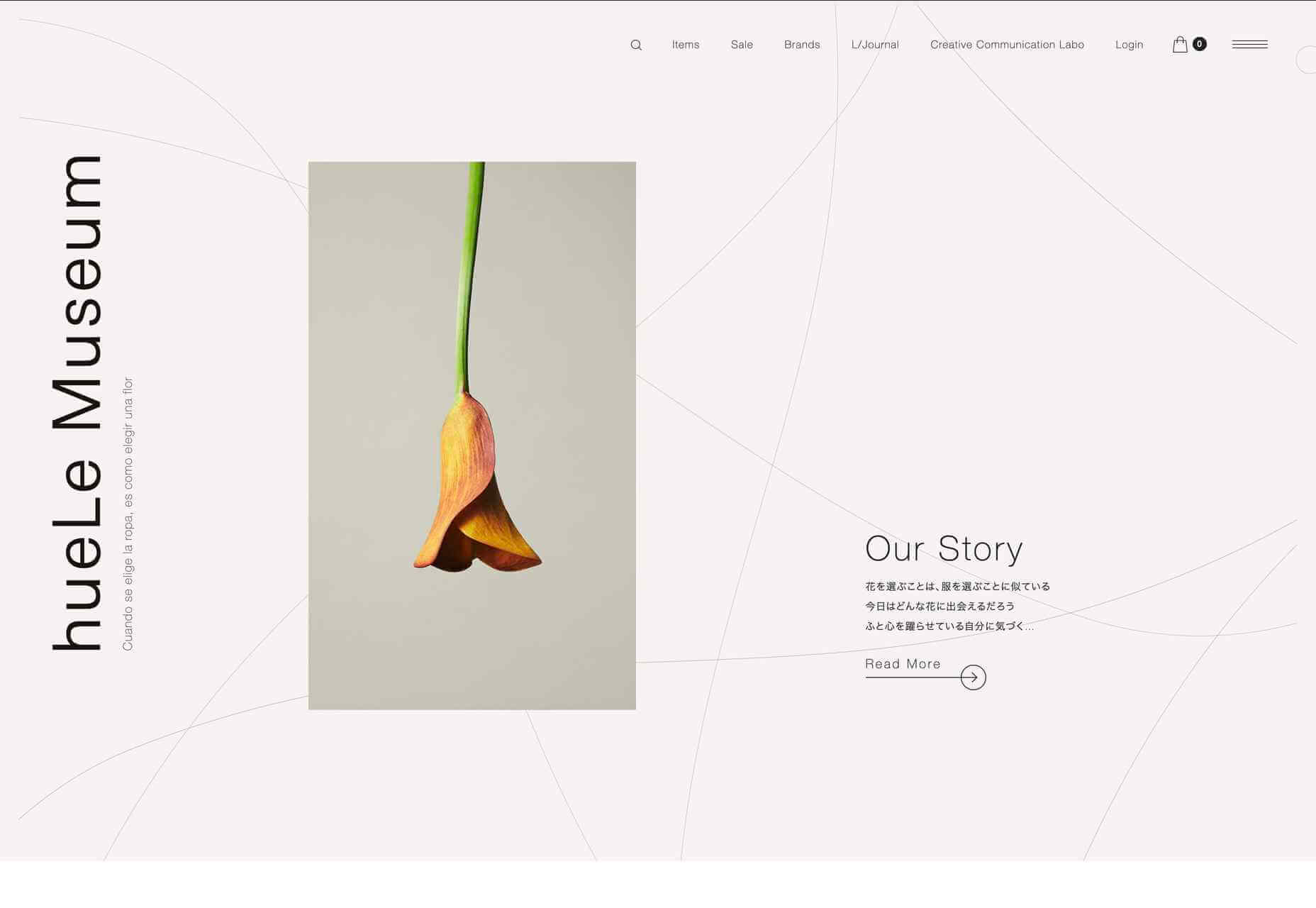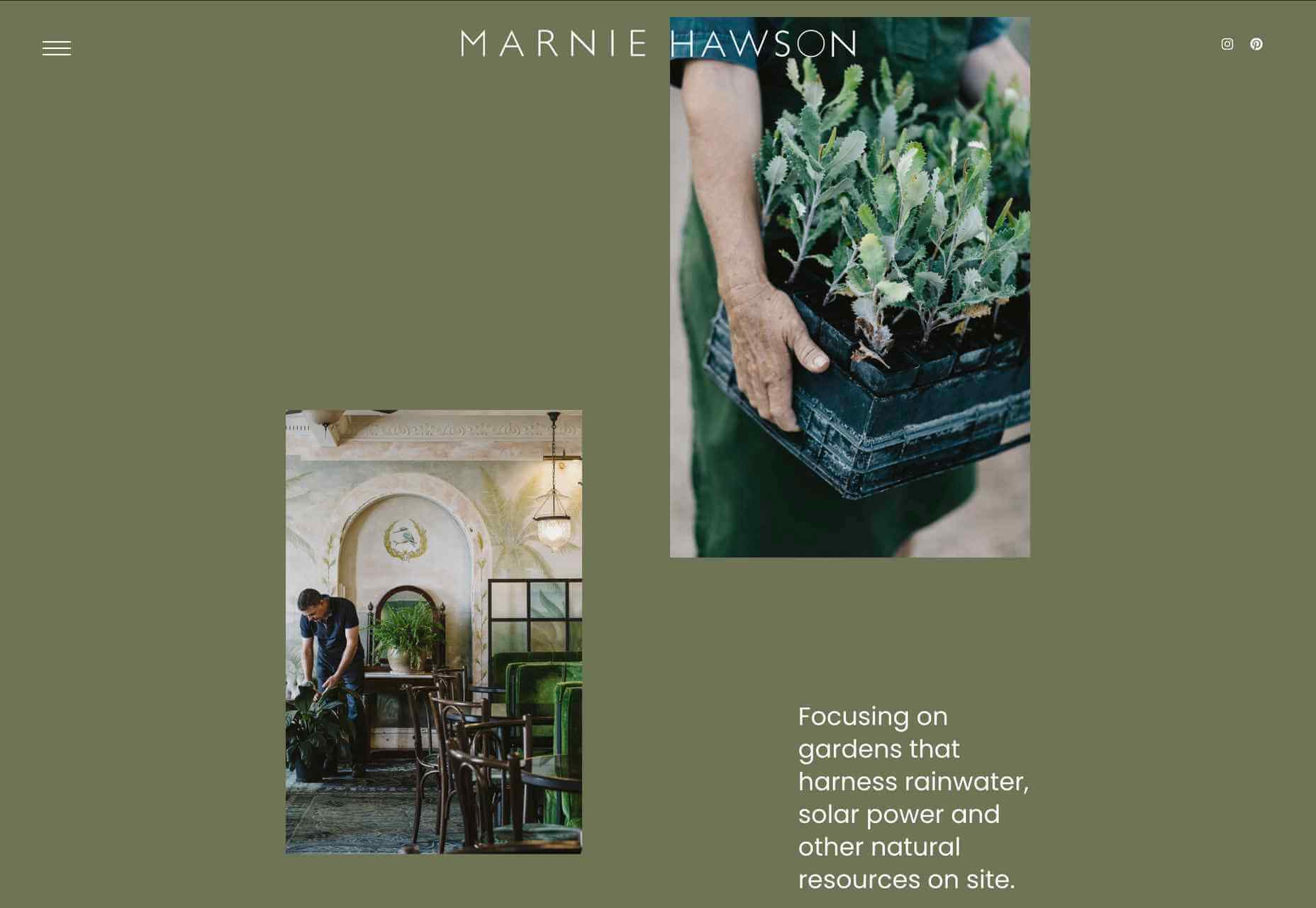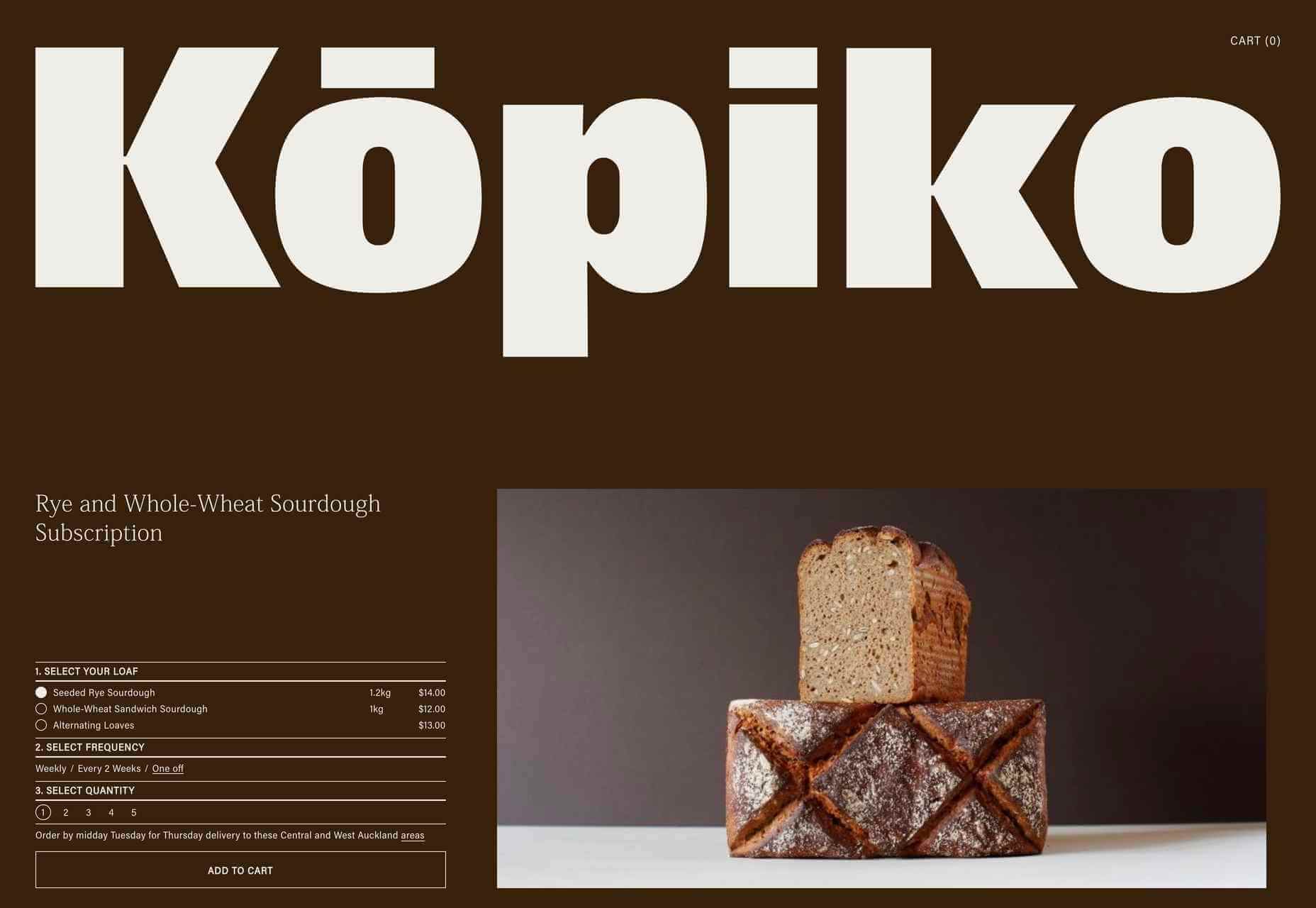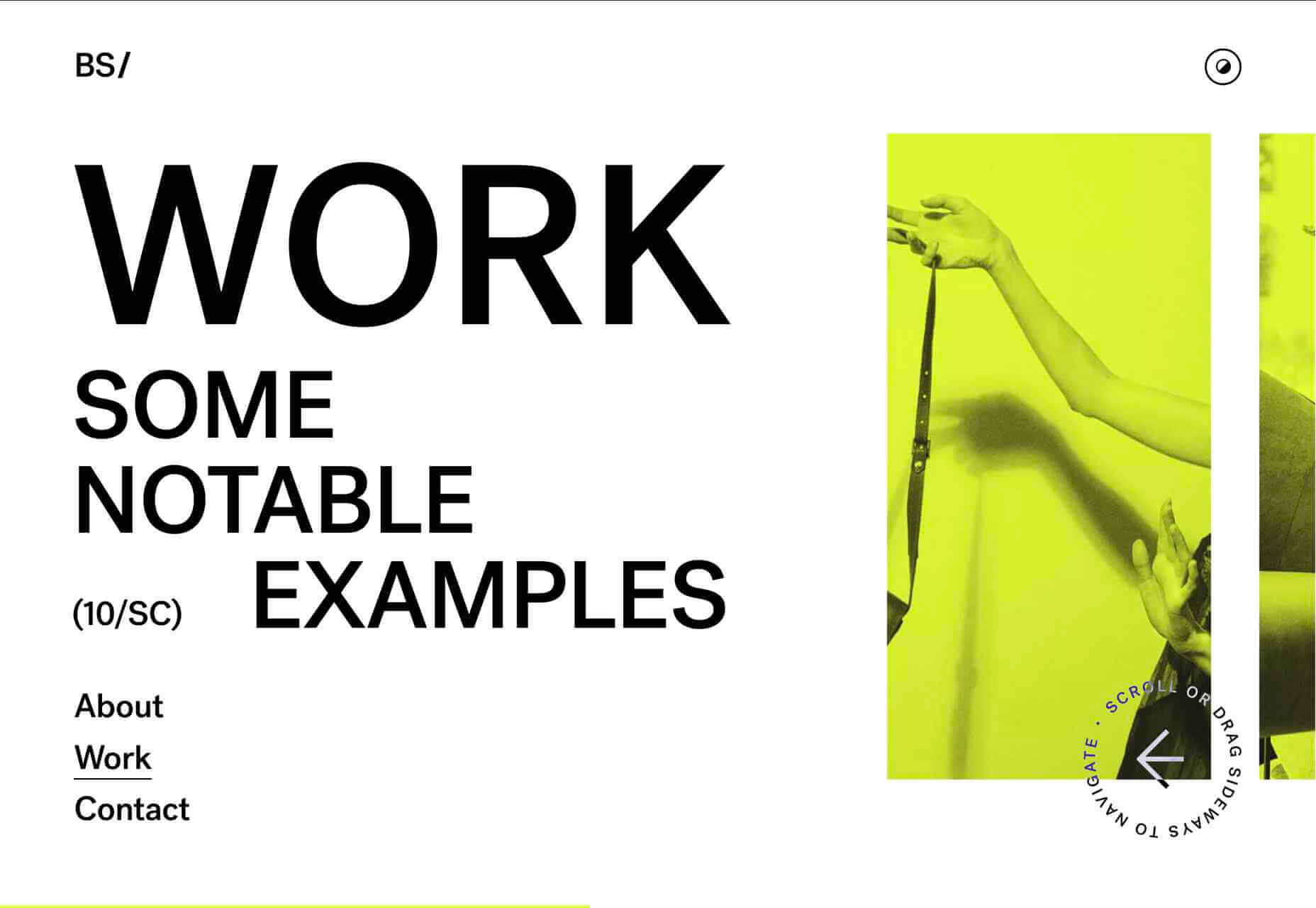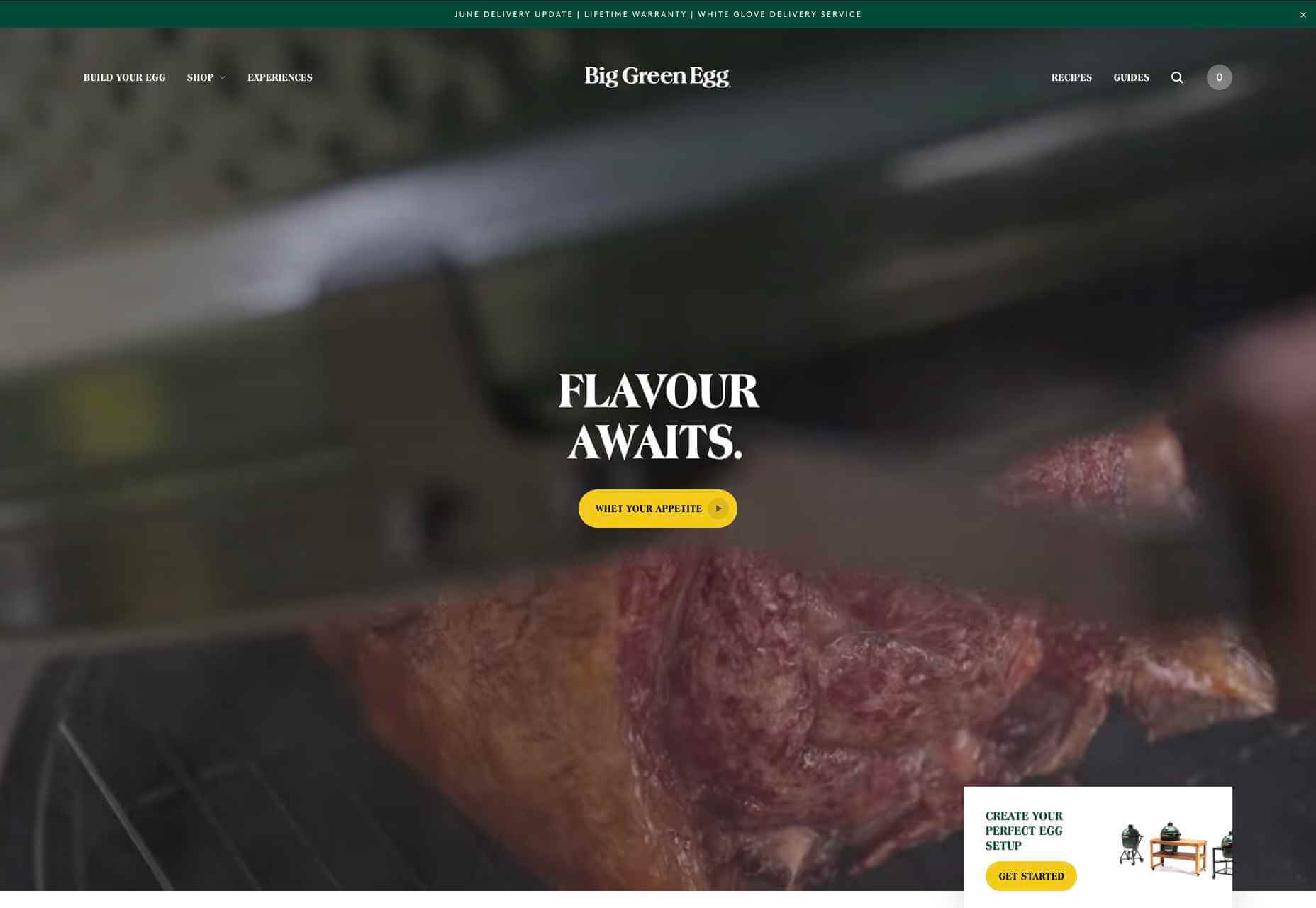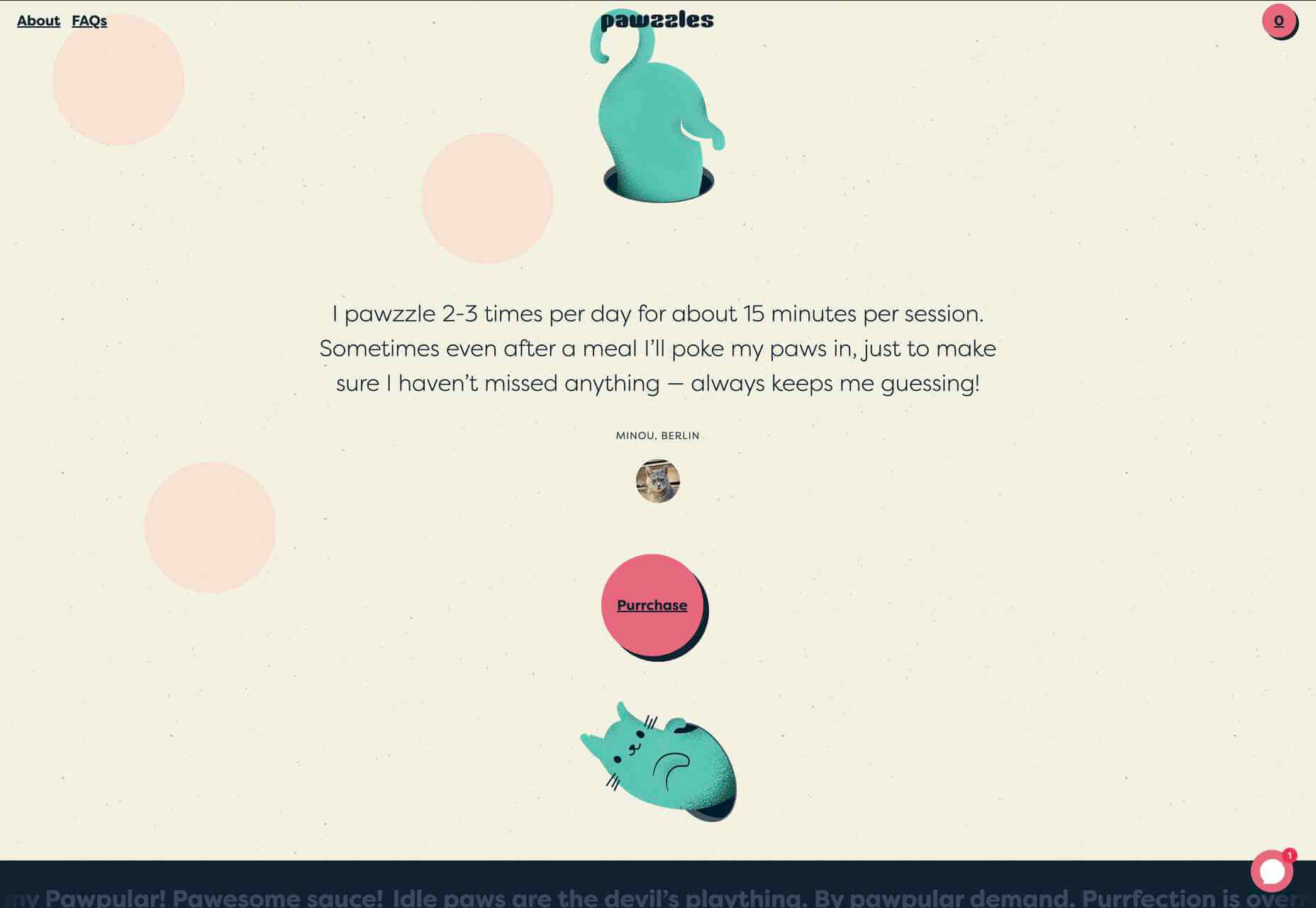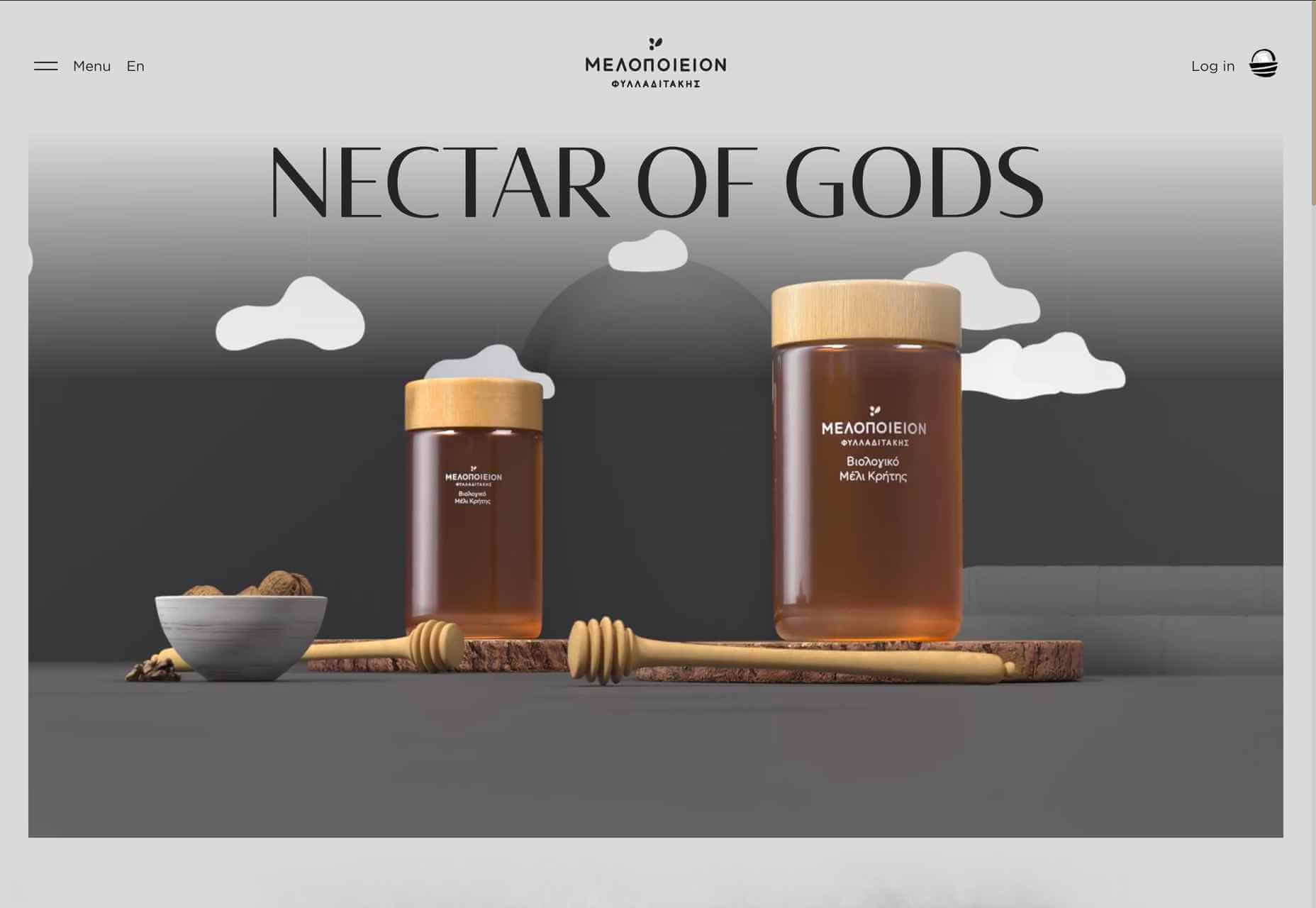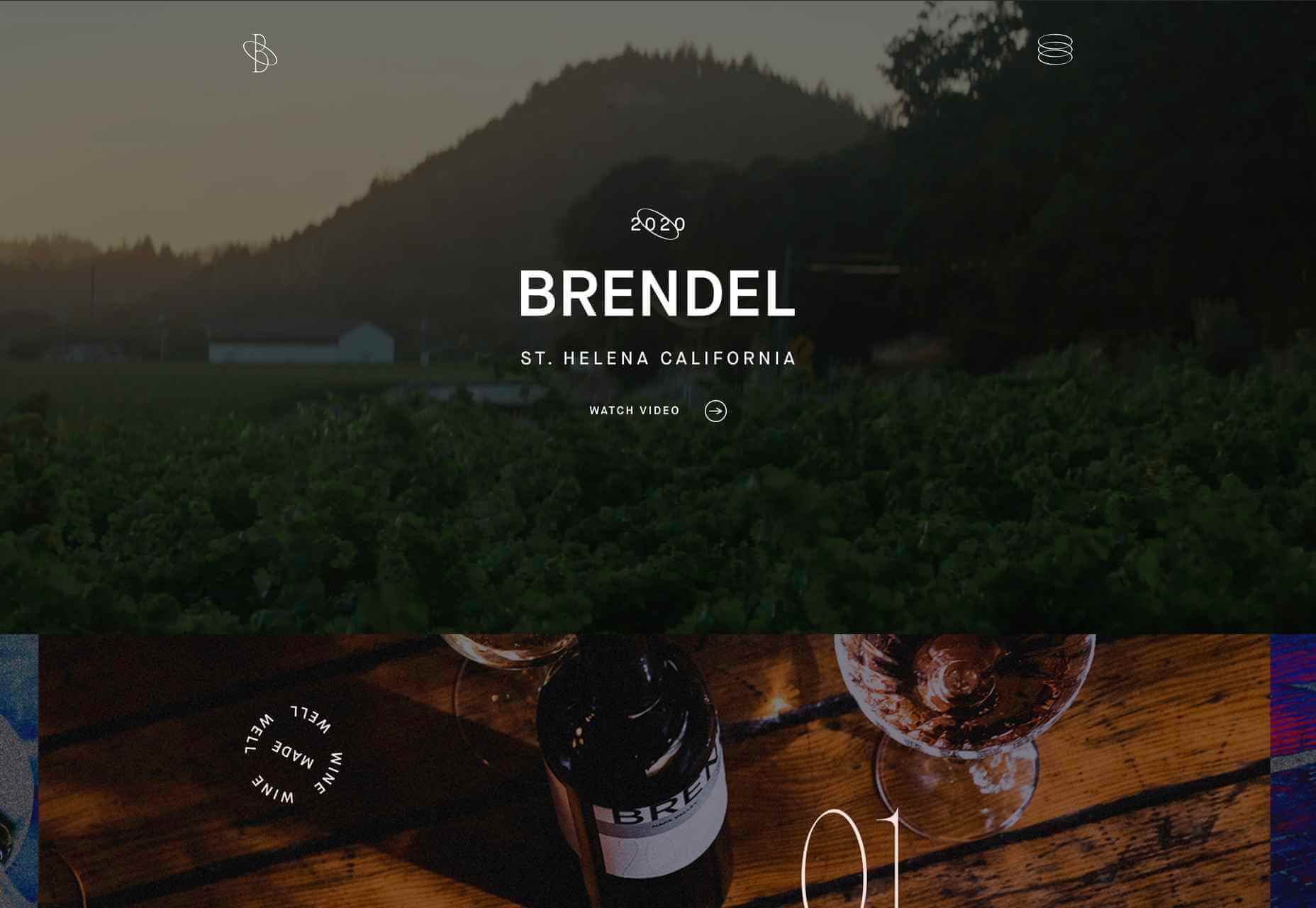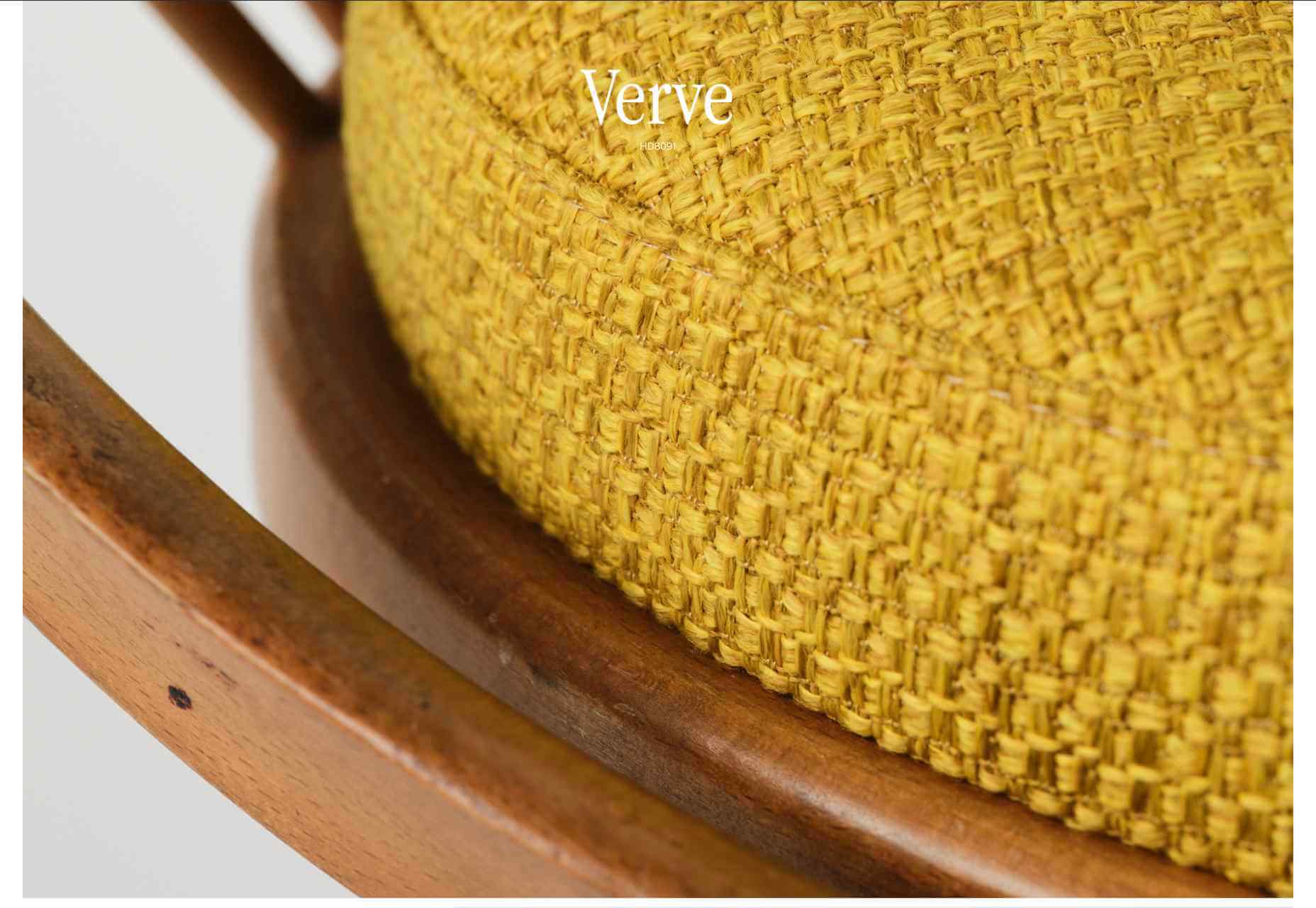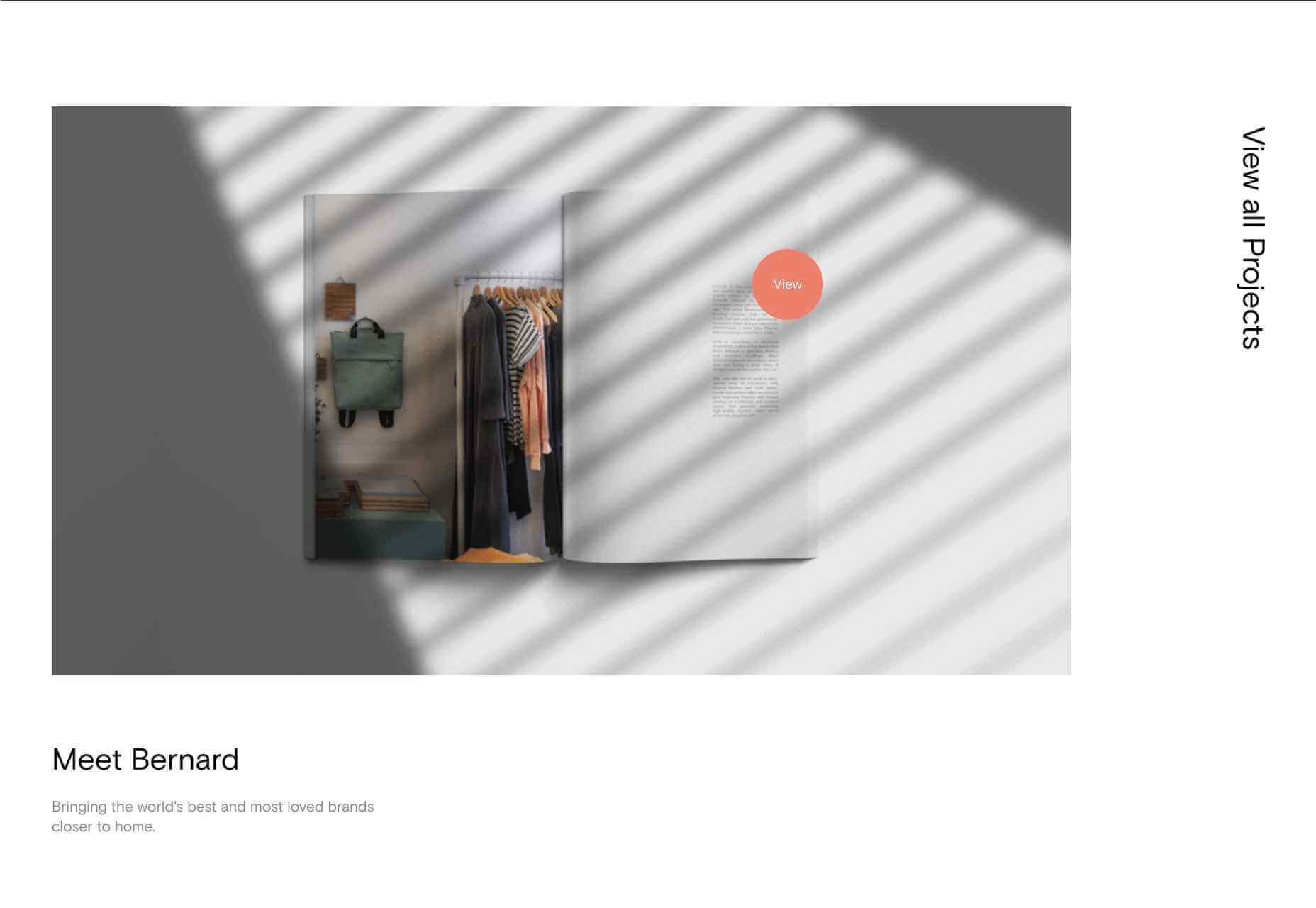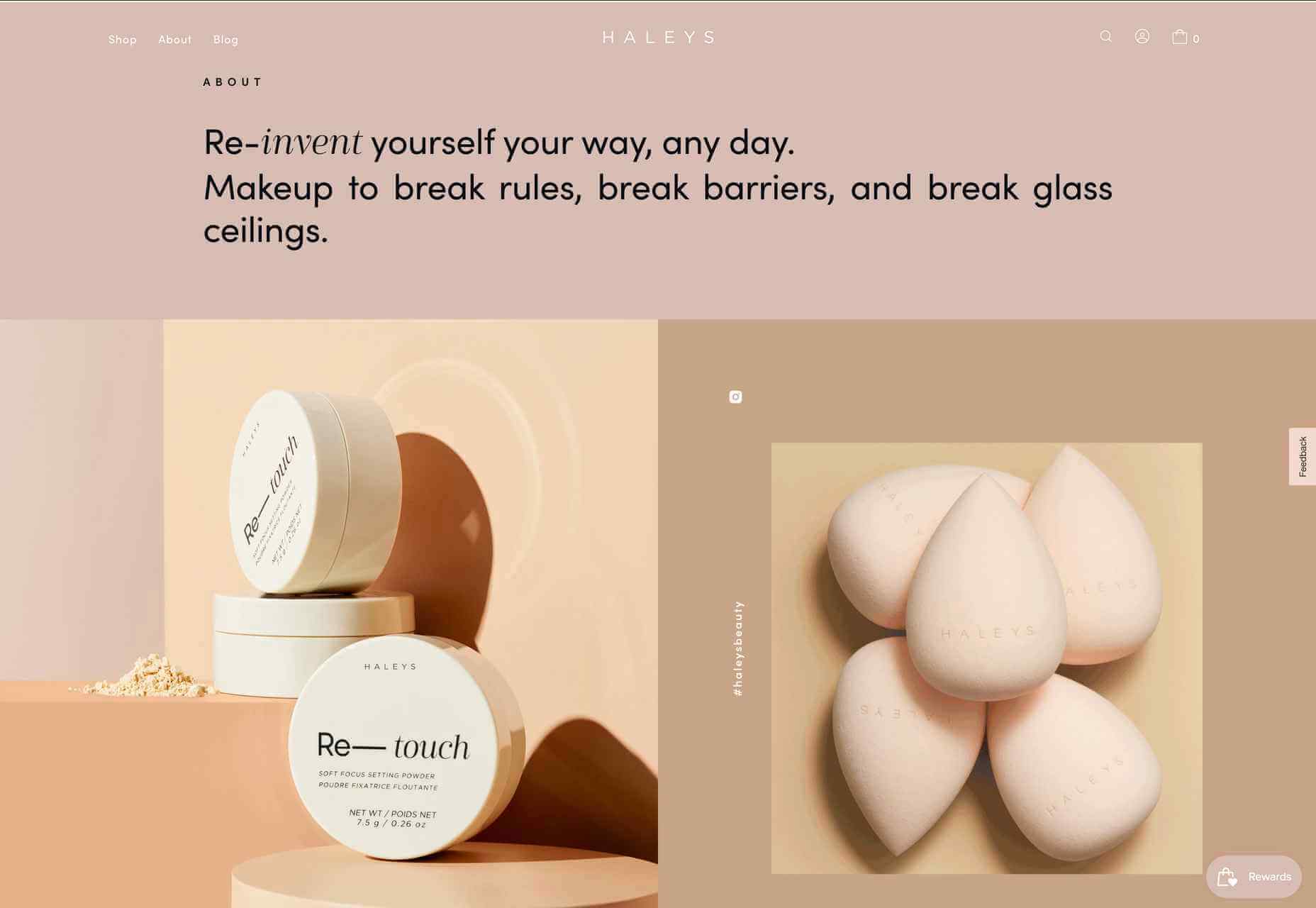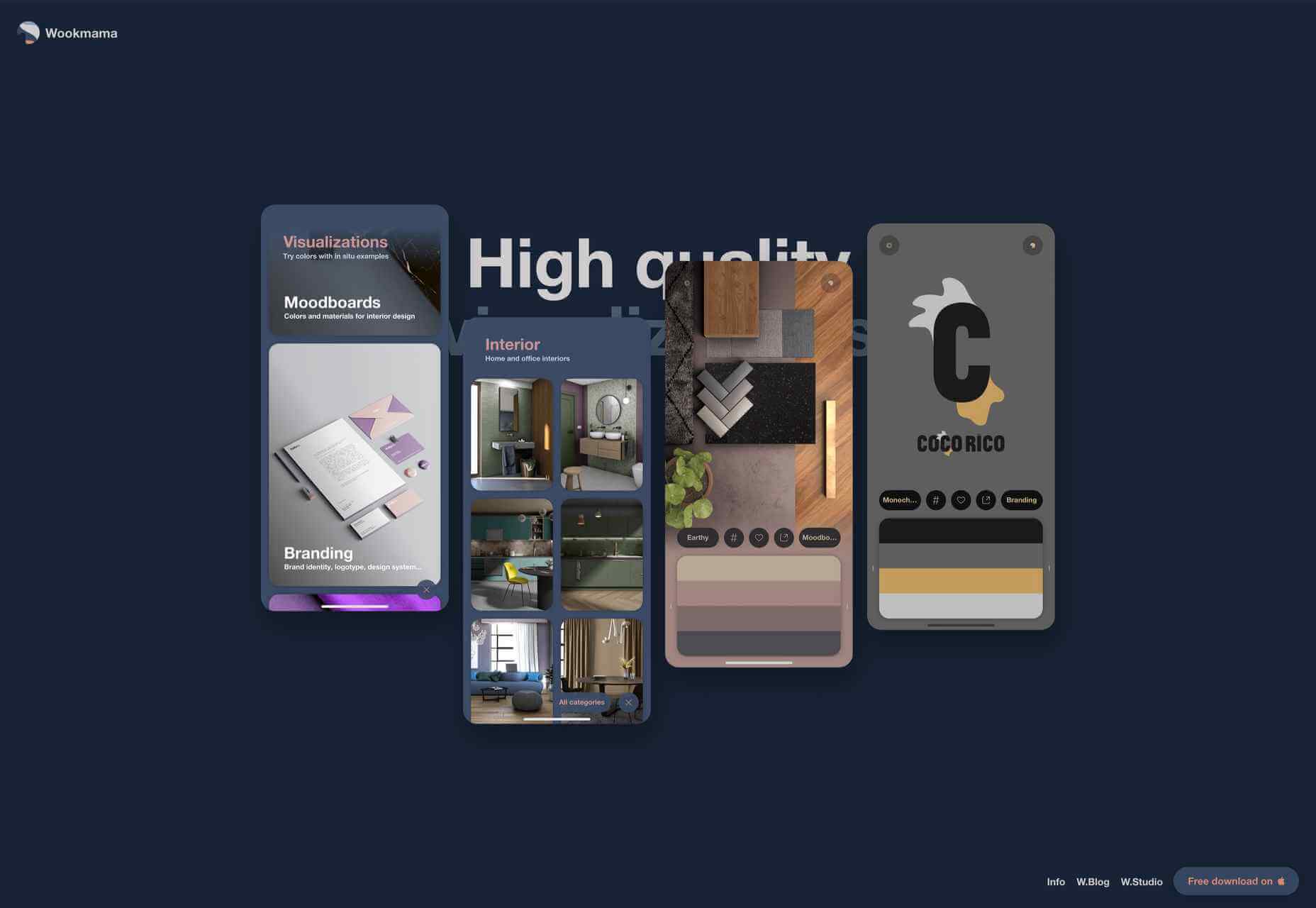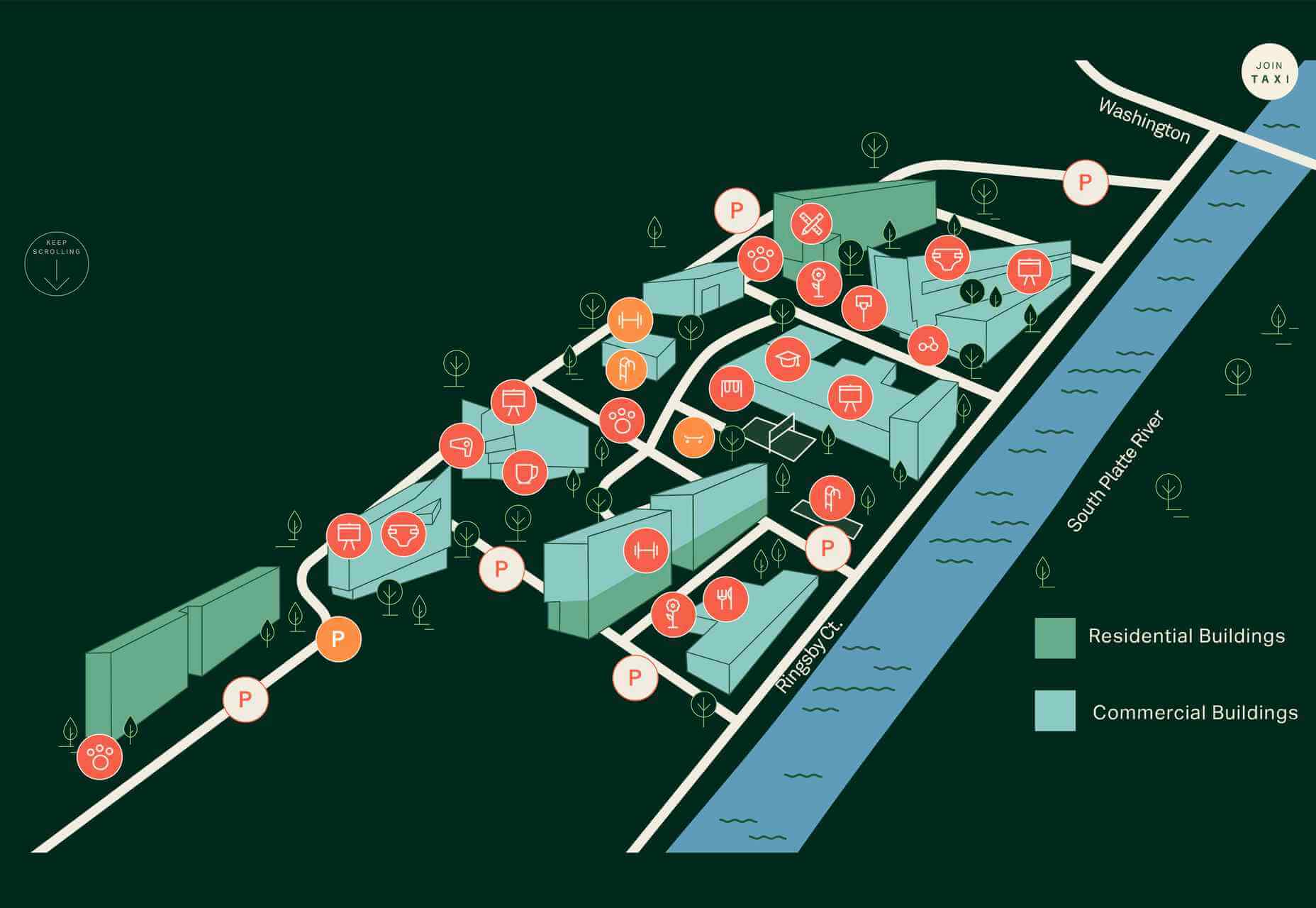Jakarta EE 10 is on its way! This is the third release of Jakarta EE since the transition from the Java Community Process (JCP) to Eclipse Foundation. In this session, we will go through every aspect of Jakarta EE 10 and how this release lowers the barriers of entry, eases the migration, and lays the foundation for a platform for future innovation. We will also look ahead towards what future releases may bring. There will be a demo including converting from the javax.* to jakarta.* namespace as well as looking at available implementations.
Articles
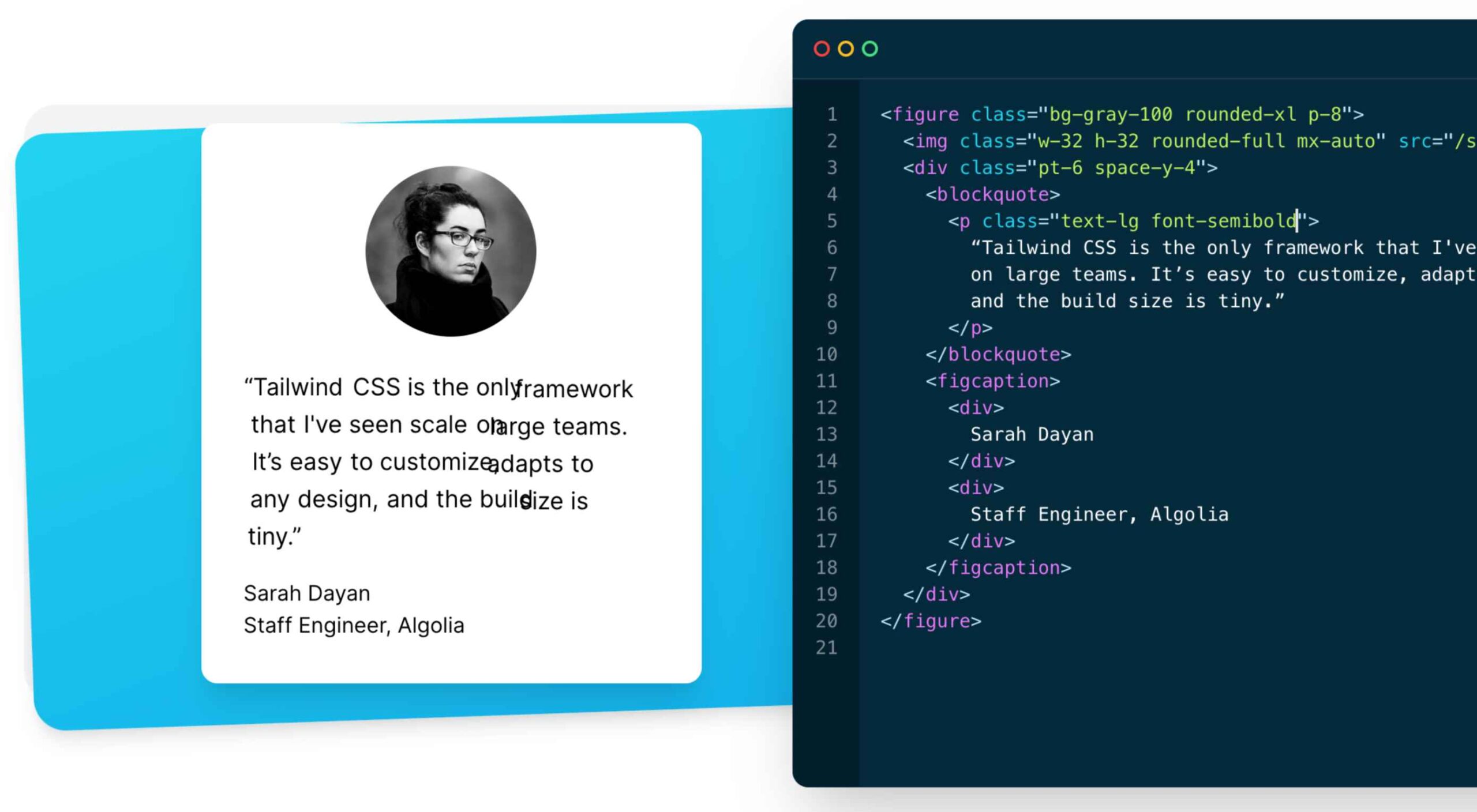 As a utility-first CSS framework, Tailwind has rapidly become popular among developers. With its fast styling process and the freedom it offers when designing a website, it’s really no wonder why.
As a utility-first CSS framework, Tailwind has rapidly become popular among developers. With its fast styling process and the freedom it offers when designing a website, it’s really no wonder why.
But how can you make sure this is the right CSS framework for your upcoming development projects? In this blog post, you’ll learn what Tailwind is, and how it differs from other frameworks like Bootstrap, or Foundation.
In addition, we will highlight the main advantages and disadvantages of the framework. By the end, you will be able to make an honest and objective assessment as to whether Tailwind is the right framework for you. So without further ado, let us dive deeper into it.
What is Tailwind CSS?
First released in May 2019, Tailwind CSS is a front-end CSS framework. It is currently at version 2.2. Since its release, Tailwind has created quite a following. More than 260k developers have used it to enhance their design systems.
Stats like these make Tailwind one of the most popular CSS frameworks on the market, and all in less than two years. There are many reasons for this. Primarily, because its features make it the ideal choice for a wide variety of projects. Tellingly, most developers prefer it to create React projects.
The main difference between Tailwind and its competitors is that it gives developers complete control over the styling of a web application. So, is it the right CSS framework for you? To answer this question, let us take a look at Tailwind’s advantages and disadvantages.
Tailwind CSS: Pros and Cons
Tailwind CSS: Advantages
1. Control Over Styling
Tailwind is a unique CSS framework when it comes to styling web applications, meaning that Tailwind does not have a default theme that you have to use like other CSS frameworks.
For example, you can give each project a different look even if you use the same elements (color palette, size, etc.). Therefore, it’s one of the few CSS frameworks that is not opinionated on how you should style your project.
2. Faster CSS Styling Process
There is no faster framework than Tailwind when it comes to styling HTML. As a result, you can easily create good-looking layouts by styling elements directly. This is possible because Tailwind offers thousands of built-in classes that do not require you to create designs from scratch.
Therefore, you do not have to write CSS rules yourself. These CSS classes are the main reason why building and styling with Tailwind is so fast.
3. Responsiveness and Security
With Tailwind’s pre-built classes, you can design the layout directly in an HTML file. This makes it a very responsive, mobile-friendly CSS framework. Apart from that, Tailwind has proven to be a stable framework since its initial release.
The framework was developed by top-notch engineers, which is why bugs and breaks are rare.
4. Additional Features
Tailwind CSS works in the front end of a website. For this reason, it is reasonable for developers to demand ultimate responsiveness. Well, Tailwind provides the ability to create responsive themes for your web applications and remove all unused CSS classes. With PurgeCSS, Tailwind helps you keep your final CSS as small as possible.
Tailwind CSS: Disadvantages
1. Styling and HTML are Mixed
Because you do not have to write CSS rules yourself, Tailwind works differently than most CSS frameworks. While this is great for those unfamiliar with CSS, it also means that Tailwind mixes style rules in with your HTML files.
This goes against the principle of the “separation of concerns.” Many developers prefer to separate page structure and style, claiming that classes make the Tailwind markup process verbose.
2. It Takes Time to Learn
Because of the built-in classes, Tailwind CSS is quite learning-intensive. Even for experienced developers, it can be a challenge to learn how to use and fully utilize the pre-built classes. But, of course, as with any other development task, practice makes perfect.
However, if you are confident and quick when it comes to writing CSS classes, Tailwind may not be the best choice for you. Even if that’s true, Tailwind generally makes CSS styling faster in the long run.
3. Lack of Important Components
Unlike Bulma and Bootstrap, Tailwind does not have many significant styling components. Unfortunately, this means you have to manually add features like headers, buttons, and navigation bars for web apps.
This is not a significant drawback, as experienced developers can implement these features quickly. However, you will need to spend some time doing so.
4. Documentation
Although Tailwind CSS has made great strides when it comes to adding guides and video tutorials, it still lags behind competitors like Bootstrap. Of course, you can always contact the developers if you have a problem.
However, keep in mind that this may take some time. For this reason, you may need to customize the framework to your needs manually.
Is Tailwind Worth Trying?
In a few words, working with Tailwind is quite different from other CSS frameworks. We have identified its main advantages and disadvantages. Based on these features, we can easily say that Tailwind is:
- An excellent solution for developers familiar with CSS who want to speed up the creation and design process in the long run.
- Not such a good idea if you are not familiar with CSS or do not want to spend time learning a new CSS framework.
It becomes clear that it all depends on your personal needs and preferences. However, if saving time on CSS styling is a priority for you, you should definitely give Tailwind a try.
Regardless of whether you choose to use Tailwind or not, it’s evident that many developers use it for good reasons. Since it offers a faster styling process and is a responsive and stable framework, it’s here to stay.
Tailwind can help you save time and change the way you design websites, and so taking the time to test it out is worthwhile.
The post The Pros and Cons of Tailwind CSS first appeared on Webdesigner Depot.
Every developer has been there before: You release a new feature expecting a smooth ride, only to have something go awry in the back end at the last minute.
An event like this can derail a launch, letting down customers and leaving you scratching your head wondering what went wrong.
 A press release is one of the most valuable tools in a marketing team’s arsenal. Though press releases have been around for decades, they remain one of the best ways to reach new customers, improve your brand reputation, and generate awareness.
A press release is one of the most valuable tools in a marketing team’s arsenal. Though press releases have been around for decades, they remain one of the best ways to reach new customers, improve your brand reputation, and generate awareness.
Press releases are also wonderfully cost-effective. Unless you’re using paid distribution channels, all you have to spend is your time to create your press release.
So, how do you get started?
What is a Press Release?
A Press Release is a short, simple, and compelling news story designed to promote the goods and services of a business. You’ll usually see these pieces of content published on industry websites, news channels, social media platforms, and even on the company’s blogs looking for awareness.
The idea behind a press release is you provide a publication or group with all of the most valuable facts and insights into your latest newsworthy story. You might use a press release to announce a new product or to tell people about your recent partnership, for instance.
A press release post then delivers this information to a wider potential audience by distributing the content in a range of different places.
Why Should My Business Send Press Releases?
Why not simply tell people about your latest products and sales on social media, and leave it at that? The simple answer is Press Releases help you to gain the attention you might not get from your own media channels alone. With a press release, you can:
- Set the record straight: In the middle of a PR disaster, a Press Release can give people the information they need to make their own decision about who’s right.
- To improve your brand reputation: Launching press releases through well-known publications immediately boosts your credibility. The right publication shows you’re well-connected and professional.
- To gain media coverage: When launching a new product or service, a press release helps attract potential customers to your business and gives you more opportunities for sales.
- To improve SEO: In the digital world, a press release allows you to earn backlinks from high-authority websites, improving your ranking.
- To find new customers: Press publications and websites will reach a wider audience than you can find on your own. In addition, publishing press releases gives you new eyes on your business for minimal cost.
You can send a press release for various reasons, including announcing breaking news, talking about newly launched products, discussing upcoming events, confirming partnerships, and more. It’s also worth creating a press release when new people join your executive team when you receive an award, or even if something bad happens (for crisis management)
What’s Included in a Press Release?
A press release will include different information depending on what you’re trying to accomplish. In general, PR posts feature:
- A headline: This is where you share the most important info of your story
- Contact details: How the media can get in touch with you
- Location: Where you are and where the news event is taking place
- Body copy: Information about the news event
- Quotes: It’s common to see quotes in a press release from high-level staff
- Boilerplate: Insights into what your organization is about
How to Write a Press Release (Step by Step)
Now you know what goes into a press release and why these tools are so valuable, it’s time to start planning your big announcement.
Here are our top tips for creating an amazing press release.
1. Choose the Right Story
Press releases are focused on sharing valuable news with a specific audience. It would be best if you had something important and new to say, or you risk not getting your story published at all. You can’t just talk about a product or service that’s selling well (unless it’s breaking world, or brand records).
Think about whether your PR topic is:
- Timely: Is the event you’re talking about just about to happen, or has it happened recently? If something happened weeks or months ago, press groups aren’t going to be interested. Aside from ensuring your message is timely, make it topical too. Ensure this story is going to give something valuable to your audience.
- Relevant: Before you send a press release to anyone, make sure it will be relevant to the audience you’re targeting. Who does the story affect, and why is it important? What kind of benefits or opportunities will it deliver?
- Unique: What’s unusual or unique about this story? You don’t want to comment on the same things that everyone in your industry is already talking about.
- Engaging: What about your story is going to make readers stand up and take notice? Is there any trouble or tension you’re going to overcome? Look at this press release from Target as an example. How can you frame your story in a way that makes people want to learn more about your business?
When asking yourself what your PR story should be about, consider whether you want to publish it if you were a publication leader. From an objective perspective, does this story have value?
2. Answer the Right Questions
A press release doesn’t just provide information. Written correctly, this content will also answer essential questions for your audience. For instance, let’s take a look at the questions you should answer, with an example.
For this example, we’ll be looking at a social media marketing firm partnering with an SEO brand:
- Who is doing this? What’s the name of the social media marketing firm and the SEO brand? Where do they come from? Which executives are involved?
- Who is affected? This news would probably affect the stakeholders and shareholders for the business and the customers by providing access to new services.
- What have the companies done? They’ve joined forces in a partnership, but which sectors and teams are actually going to be working together?
- Where is this happening? Which area will these two companies now serve? Who will be able to access the service?
- When did it happen? When is the partnership going to start when will customers see the first major changes?
- Why has this happened? In this example, the why might be to offer customers more services and helpful products.
- Why does this matter? Why is it so important that this event is taking place for your target audience? How are they going to benefit?
- How will you be implementing this change? For example, if you’re partnering with a new business, will you change your brand name and leadership team? Will you have a new headquarters?
3. Target the Right Sector
Like most pieces of great copy, a press release should generally be written with a specific audience in mind. The interesting thing about a press release is that you’re not just writing for the people who might be interested in your products and services. You’re also writing for a specific publication, journalist, broadcaster, or editor.
When you’re writing your content, you’ll need to keep both audiences in mind to ensure that you get your message across. Focus on the kind of crucial messages which will appeal to your end-users and customers but address the preferences and needs of the editor too. Many publications will have guidelines to follow if you want a chance of getting your content on their site.
If you’re sending your press release to multiple locations, you might need to look into doing several different versions of your press releases, each with slightly different wording and information, based on your target publication.
4. Get the Headline Right
There are few things more important in a press release than an amazing headline.
A good headline will immediately attract the attention of your publication, as well as anyone who might end up reading your article. The media uses headlines to determine whether stories are worth reading or publishing. This means that you need to get attention quickly.
Most press release headlines don’t try to be clever. There isn’t a lot of fancy language to worry about. Instead, your focus should be on sharing the main point of the press release fast.
For instance, if you’re announcing the arrival of new security measures in your business to protect hybrid workers, you might have a headline like:
- [Company] implements end-to-end encryption for hybrid workers
- [Company] uses new encryption techniques to support hybrid work
- [Company] invests in encryption technology for hybrid employees
5. Use the Right Structure
Structuring a press release can be tough.
Some companies have specific requests on how your press release should look. For instance, you might have to place the date and time in a specific place. For instance, CNN always puts the date of the release before the headline:
If you don’t have to follow a specific format, you should stick with the inverted pyramid structure. This strategy involves placing the most critical information first and moving down the hierarchy to less important info – like contact details.
When structuring your press release, make sure the headline immediately tells your customers and readers what the story is about and presents immediate value. The opening paragraph will then summarise the main factors and elements of the story, giving a fuller explanation of what the story is about. For instance, for the “[Company] implements end-to-end encryption for hybrid workers” example, the first paragraph might read:
[Company] recently announced an investment in the latest encryption tools for information at rest and transit for hybrid employees. This new security strategy is rolling out immediately to new and existing customers of [company], with access to extra features available for premium subscribers.
The second paragraph then follows up with contextual insight into why this story is important. For instance, in the example above, the second paragraph might say:
This new investment comes at a time when more employees are moving into the hybrid working model. [Company] believes that higher encryption is crucial for teams working in a cloud environment, even with access to VPNs and other security measures available.
The third paragraph then presents details on the story, including information on who’s involved, how this story came about, and anything else that business leaders might need to know. If there is an additional paragraph, you might include some quotes from business leaders or industry authorities to add credibility or opinions.
6. Perfect Your Writing
No matter how short or simple, any press release is an insight into your company and brand. Don’t rely on the publication company you choose to do all the editing for you. Make sure you proofread your content and ensure everything sounds fantastic. It’s also worth double-checking any details to ensure that stats and facts remain accurate.
When boosting the writing of your press release, remember:
- Address the topics that your readers will find most interesting: Choose relevant topics with obvious benefits and repercussions for your target audience. Don’t get bogged down in fluff, and don’t be overzealous with patting yourself on the back. It’s best to avoid too many adjectives like “world-leading” and “fantastic” when describing your brand.
- Write in the third person: Third-person writing is common for press releases, even when you’re talking about yourself. For instance, you might say, “Dell’s marketing team recently shared information on a new computer series.”
- Keep it simple: Stick to one focus story per press release and try not to overwhelm your audience with too much information. Press releases are short, focused, and easy to read. If you have extra information to provide, you can make a note at the bottom of the release. The close of your PR is where you can provide contact details, links to products, and backlinks to further articles.
Remember, a compelling, human quote can really make a difference to your press release too. This is a chance to allow the executive voices in your business to shine through. Make sure you highlight exactly why you’re so excited about the press release in the quote while using emotive language to connect with customers. For instance,
The company CEO said: “We’re proud to be offering our current and new customers access to this new security service. After working with the best encryption professionals in the industry, we’re confident we can reduce data breaches and security concerns for hybrid workers.”
7. Double-Check Your Press Release
Before you send your press releases to anyone, it’s best to do a quick check to ensure that everything sounds great and that you haven’t left any annoying errors unaddressed. Use this quick checklist to examine your content:
- Is the release date and publishing date correct (make sure you’ve included information on any embargos)
- Is the contact information correct and in the right-hand corner of the page? This includes the name of the company, phone number, and email address.
- Does the formatting match the outline requested by the publication?
- Is the boilerplate at the bottom of the template?
- Is the headline eye-catching and meaningful?
- Are all of the relevant details included throughout the press release in order?
- Are names and information spelled correctly?
- Is the press release free from any grammatical issues and complex jargon?
Make sure you include information on how to reach out to you if the publication notices anything wrong with your site’s performance.
Where To Send Your Press Releases
Once you’ve worked through your press release (and double-checked it for quality and accuracy), you can think about where you’re going to send it. For example, you may send multiple versions of your press release to different companies and publications. Ideally, you’ll create an entire press kit, which might include pictures of your team, product, or service, as well as contact details and extra brand information.
Some companies prefer to approach press relationships by pitching their story to a few carefully selected editors and publications. This is often a good idea if you’re trying to reach a particular audience or you want to improve your reputation by connecting with a certain brand.
Alternatively, you can use PR wire services to send your information to multiple companies at once. There are various services online to help you get your press announcements to the right people. Options to look into include:
- Industry publications for specific sectors (like technology or medicine)
- Local newspapers and online news outlets
- General news sites like Google News and Apple News
- Blog sites that attract your target audience
- Influencers and industry partners
Start small and gradually build a list of contacts to help you get your voice and business out there. Eventually, you’ll find it’s much easier to get publications to accept your press releases. You might even find that people start approaching you to find out if you have any upcoming news.
Go and Get Published!
Now you’re equipped with everything you need to know to create a fantastic press release and attract new eyes to your business. The only thing to do next is to get out there and start sending your press releases to the right people. Remember, once your press release is published, make sure you promote it through your social channels, email, and website.
Featured image via Pexels.
The post How to Write a Press Release: The Complete Guide for 2021 first appeared on Webdesigner Depot.
Like so many others in the Apache Cassandra community, I’m extremely excited to see that the 4.0 release is finally here. There are many, many improvements to Cassandra 4.0. One enhancement that is more important than it might look is the addition of support for Java versions 9 and up. This was not trivial, because Java 9 made changes to some internal APIs that the most performance-oriented Java projects like Cassandra relied on (you can read more about this here).
This is a big deal because with Cassandra 4.0, you not only get the direct improvements to performance added by the Apache Cassandra committers, you also unlock the ability to take advantage of seven years of improvements in the JVM (Java Virtual Machine) itself.
 Ever since online stores first emerged they’ve faced one big challenge compared to their real world rivals; yes, it’s convenient to shop wherever, whenever you want, and delivery options permitting, buy from anyone anywhere in the world. But it’s a minimal experience compared to the fuller sensory experience of shopping in the real world.
Ever since online stores first emerged they’ve faced one big challenge compared to their real world rivals; yes, it’s convenient to shop wherever, whenever you want, and delivery options permitting, buy from anyone anywhere in the world. But it’s a minimal experience compared to the fuller sensory experience of shopping in the real world.
Online stores can only access our sight and hearing, whereas physical shops can engage all our senses. How can a website compete with the experience created by walking into a physical space where lighting, layout, decor, and background audio are all carefully designed to create an appropriate atmosphere; where you can touch fabrics to check how they feel, try clothes or shoes on without having to buy them first? How do you sell scented products without allowing them to be smelled?
In this month’s round-up, we see a few different approaches to solving this dilemma, sites that focus the copy, visual, and auditory, to work on the imagination.
Go Love Yourself
This microsite to advertise The Body Shop body butters, uses sensuous imagery and video to create an atmosphere of indulgence while also offering comprehensive product information.
Niarra Travel
Sustainable, bespoke travel agency Niarra Travel makes good use of some beautiful photography. The background color scheme of earthy greens and neutrals fits both the luxury and eco-conscious aspects of the company.
by Humankind
by Humankind is a personal care brand making toiletries from natural ingredients. The focus of their pitch is reducing plastic waste. The site is appropriately sparse, with simple product shots and mostly warm neutral colors.
Mama Joyce Peppa Sauce
This one-page site for Mama Joyce Peppa Sauce is big and bold. Lots of scrolling type and vintage style illustration. You don’t need to look for a ‘buy now’ because the cursor itself is it. Click almost anywhere, and two bottles of sauce go into your cart.
Eadem
Eadem is a beauty company for women of color — their flagship product is a serum that fades dark spots without bleaching. Pinks and dark golds contrasted with fresher oranges and pale greens create a color scheme that feels rich but not heavy.
Pact Media
Pact Media is a full-service digital design agency whose work mainly focuses on agencies, businesses, and organizations involved in conservation. Large type and greyscale with red accents create a strong feel, while color on image rollover adds extra impact.
hueLe Museum
hueLe Museum is a collection of clothing brands. The philosophy behind it equates choosing clothes to choosing flowers, and there are some beautiful flower images. There is a sense of tranquility to the site, and it is even better on mobile.
Marnie Hawson
Photographer Marnie Hawson’s portfolio site is clean and simple, with a warm green (again) background and an engaging asymmetrical grid layout.
Kōpiko
Kōpiko is a micro-bakery that offers a sourdough delivery subscription service to its local area. It makes and sells only two products, and the single-page site is suitably simple. Putting the subscription form above the product and company information gets to the point without seeming pushy.
Banila Studio
Banila Studio is a branding and design studio in Basque Country. This is a nice example of sideways scrolling, and the alternate color scheme option is a fun touch.
Big Green Egg
Big Green Eggs are high-end barbecue/outdoor ovens. Lots of high-quality food photography is the key here, along with a clear build-your-own setup process.
Pawzzles
Pawzzles is a puzzle feeder toy for cats, and yes, there is a cat video. This has a fun feel, with some rather sweet illustrations and lots of silly puns. By cat lovers, for cat lovers.
Melopeion Organic Thyme Honey
The choice of display type on this site — crucially one that works well for both the latin and greek alphabets — emphasizes the Cretan origin of Melopeion honey. The illustrations are appealing, and the shopping basket icon is an especially nice detail.
Brendel Wines
This site for Brendel Wines is all about photography, large background photographs, and video, as well as product shots. More specifically, the lighting in the images creates an atmosphere, a sense of warm summer evenings.
imNativ
imNativ is an upholstery fabric: not the most exciting product to present enticingly. Some good, close-up photographs and well-styled images of the fabrics in use make them desirable.
Thursday Studio
Thursday design studio has produced a very pleasing, clean site for their own portfolio. The split-screen scrolling that changes to sideways scrolling on mobile is especially nice.
HALEYS Beauty
HALEYS Beauty uses a soft, powdery color palette and a clear, well-spaced grid, which gives it a modern, feminine feel.
Wookmama
The Wookmama app is a color visualizer which displays palettes and applies those palettes to real-world images. Colour is, as one would hope, used well here, along with plenty of screen mock-ups.
Planet of Lana
Planet of Lana is the first game from Wishfully Studios, due for release in 2022. This teaser web page really allows the game illustrations to do the talking.
The Future of Office
The Future of Office is a sales site for office space to rent. It has a fresh, airy feel which reflects the open, minimal aesthetic of the spaces on offer.
The post 20 Best New Sites, June 2021 first appeared on Webdesigner Depot.
Earlier this week, Jakarta EE 9.1 was released. This is an update to Jakarta EE 9, adding support for JDK 11.
Alongside the Jakarta EE 9.1 release, GlassFish 6.1 has been released as a Compatible Implementation.
Velocity in agile development measures the quantity of work a team can accomplish in a sprint. It can be measured in story points, hours or days. The higher the velocity of a team, the more features it delivers, the more value it brings to customers. Sprint velocity is a good measure in sprint project management to evaluate and estimate team productivity.
The measure of the velocity is based on multiple factors: the continuous integration (CI) process, the time to qualify the code changes, to test the regression, the security, the delivery, etc…
SAP & Siemens jettent les bases d’un partenariat ambitieux : ouvrir la voie à de nouvelles opportunités, supprimer les silos et accélérer la transformation.
SAP & Siemens jettent les bases d’un partenariat ambitieux
Depuis l’annonce du partenariat signé entre SAP et Siemens le 14 juillet 2020, nous avons été ravis de voir à quel point les utilisateurs, partenaires et analystes adhéraient à cette initiative audacieuse et à notre ambition commune d’ouvrir la voie à de nouvelles opportunités, de supprimer les silos et d’accélérer la transformation. Tenir la promesse d’un retour sur investissement plus rapide, de processus de développement durables et de nouvelles opportunités métiers nécessite un nouveau niveau d’intégration. Et c’est ce dans quoi SAP et Siemens ont investi massivement – jusqu’à maintenant dans les coulisses.
La continuité numérique requiert un meilleur niveau d’intégration
Nous savons que nos clients sont aujourd’hui mis au défi d’améliorer leur vitesse de mise sur le marché tout en créant des produits toujours plus complexes et de meilleure qualité. Bien que nos solutions offrent des capacités de pointe dans leurs domaines fonctionnels respectifs, le véritable bénéfice ne peut venir que d’une communication en boucle fermée native et transparente entre le développement produits et la gestion d’entreprise. C’est le cap que nous suivons conjointement :
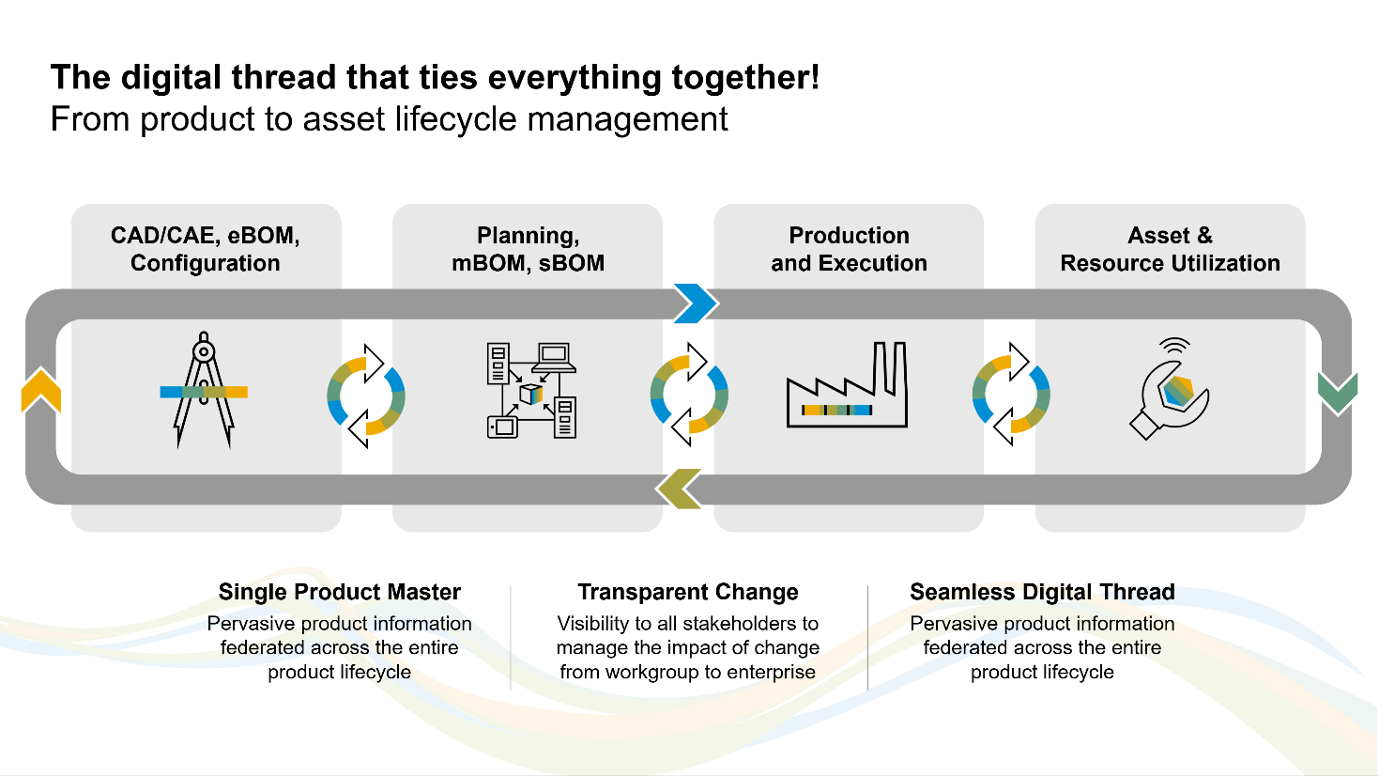
Combiner l’expertise en intégration de SAP et Siemens
L’intégration entre les systèmes d’ingénierie et d’entreprise n’est pas un phénomène nouveau. Mais il reste complexe. Pourquoi ? Parce que se mettre d’accord sur un langage commun, des processus communs et les solutions et architectures techniques associées à travers tous les secteurs d’activité, les organisations et les réseaux est une tâche difficile. Sans compter les exigences propres à l’ingénierie, aux métiers, à l’informatique et à l’industrie.
Un partenariat stratégique tel celui que nous avons mis en place avec Siemens est une excellente occasion de résoudre certains de ces problèmes fondamentaux. Nous nous appuyons sur l’idée que nos systèmes d’ingénierie et d’entreprise seront égaux et adopteront le niveau d’interopérabilité et de visibilité nécessaire pour concrétiser l’idée de continuité numérique.
Un modèle de données unique : garant du succès
Un modèle de données aligné entre SAP et Siemens est à la base de l’intégration en tant que couche intermédiaire. Cet alignement est rendu possible grâce à un niveau d’abstraction des données qui seront échangées entre Siemens Teamcenter et l’ERP SAP S/4HANA. Ce modèle de données doit être compréhensible des deux côtés et dotée d’une sémantique claire, adaptée à toutes les implémentations.
Ce modèle de données aligné continuera à évoluer afin de permettre le développement de nouveaux scénarios d’intégration.
Aperçu de la feuille de route 2021-2022 : une innovation continue s’appuyant sur des fondations solides
Depuis l’annonce du partenariat, les équipes de développement de Siemens et SAP se sont réunies pour mettre en œuvre les principes évoqués ci-dessus. Elles ont commencé parse concentrer sur le développement d’un ’échange transparent des données produits, afin de permettre une intégration bidirectionnelle des processus. Puis ont mis l’accent sur une couverture de bout en bout de processus métiers spécifiques : en commençant par la fabrication sur stock (MTS), la configuration à la commande (CTO) et l’ingénierie à la commande (ETO).
Le résultat est une feuille de route définie conjointement, qui commence avec une première version programmée au quatrième trimestre 2021.
Etape 1 : intégration du PLM vers SAP
La première release s’appuiera sur notre modèle commun et les processus de bout en bout sous-jacents afin d’établir les fondations de permettant une traçabilité, une fédération des données et des liensinter systèmes. Elle se concentrera sur les processus et le transfert de données depuis le Teamcenter vers SAP, tels que :
- Création des fiches article dans SAP basés sur les sémantiques métiers
- Transfert des données de classification pour permettre un flux d’informations cohérent vers SAP
- Création des fiches info document dans SAP
- Transfert de la nomenclature vers SAP
- Capacité pour Teamcenter de déclencher des modifications en provenance de l’ingénierie
Etape 2 : élargir le scope et fermer la boucle entre le développement produit et SAP
Début 2022, la prochaine vague d’innovations se focalisera sur la « fermeture de la boucle » entre SAP et le développement produit. Nous nous concentrerons sur les fondations des processus métier avancés, y compris les scénarios de configuration à la commande (CTO), d’ingénierie à la commande (ETO), etc. Voici quelques fonctionnalités clés de cette version :
- Création de fiches articles et de nomenclatures spécifiques
- Capacité pour SAP de déclencher des changements d’ingénierie et de fabrication
- Transfert de la définition de la configuration des produits à variantes
- Fourniture de données pertinentes pour la fabrication tout au long du processus métier
- Transfert des gammes SAP
- Mise à disposition d’une solution cross système pour la gestion du portefeuille produits et projets (PPM)
Etape 3 : interopérabilité bidirectionnelle des systèmes et scénarios d’intégration avancés
Nous avons également prévu une seconde version en 2022, qui ne se concentrera pas seulement sur l’amélioration continue des processus avancés de configuration (CTO) et d’ingénierie (ETO), mais également sur une intégration bidirectionnelle favorisant transparence et interopérabilité. Les fonctionnalités proposées comprendront :
- Gestion des nomenclatures spécifiques à la commande dans SAP
- Échange de modèles produit pour la configuration de variantes et règles de contraintes d’ingénierie
- Mise à disposition de scénarios Engineering to Order (ETO) sans couture
- Échange d’informations sur les fournisseurs basés sur les informations fournisseurs
- Activation de la traçabilité inter systèmes pour les workflows
- Activation de l’analyse d’impact inter systèmes
Si vous souhaitez en savoir davantage sur notre feuille de route, rendez-vous dans les prochaines semaines sur le SAP Roadmap Explorer.
The post Feuille de route pour une intégration avancée entre SAP et Teamcenter appeared first on SAP France News.
Introduction
Microsoft BizTalk Server 2020 is one of the world’s leading integration tools, with full support for newly released features. On January 15, 2020, Microsoft announced the release of BizTalk Server 2020. The whole community was excited to see the new set of features that were shipped in this release, it’s the beginning of a new era!
What Are the New Features?
There are many new features released with BizTalk Server 2020, let’s have a look at some of the them:






